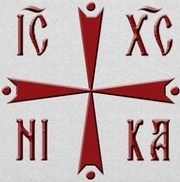Written by guest blogger, Giacomo Sanfilippo.
Orthodoxy in Dialogue, an online publication edited by three doctoral students in theological studies at Trinity College in the University of Toronto, is scheduled to launch on September 1 with a maiden article by the editors, “The State of Orthodox Theology Today.” The editorial committee presently consists of Rørik Hrothgar and Giacomo Sanfilippo, while the third position has yet to be filled. Sanfilippo is already known to readers of UTP Journals Blog for his two articles on conjugal friendship (here and here), and to readers of the Toronto Journal of Theology for his review of Wendy VanderWal-Gritter’s Generous Spaciousness in the Spring 2017 issue (Volume 33, Issue 1).
An independent student initiative, Orthodoxy in Dialogue enjoys the support of the newly appointed Dean of Divinity at Trinity College, Dr. Christopher Brittain, and the Dean Emeritus, Dr. David Neelands. Early subscribers include some of the most prominent names in Orthodox theology today, as well as a growing number of bishops and priests. The rapidly expanding list of contributors working on articles for Orthodoxy in Dialogue includes both Orthodox and non-Orthodox writers. The blog’s Facebook page already has close to 1300 members around the globe.
Orthodoxy in Dialogue is dedicated to open discussion on an unlimited range of topics within the Orthodox Church, between the Orthodox Church and other Christian churches and non-Christian faiths, and between the Orthodox Church and the wider global community in which she figures as an integral, if often underestimated, part. The editors encourage submissions from writers who represent a wide range of interests and viewpoints both within and outside Orthodox Christianity.
During the first few weeks of publication, readers can look forward to an interview with James Martin, SJ, one of the most widely recognized names in US Roman Catholicism, on his book Building a Bridge; what it means to one 18-year old to be young and Orthodox in Trump’s America; a vegan’s insights on abortion; gender inclusivity in the liturgical language of traditionalist churches; the ramifications of Pope Francis’ decision not to appoint a Latin Patriarch of Jerusalem for Orthodox-Catholic relations; Orthodox contributions to ecumenical dialogue by a former chair of the Commission on Faith and Witness of the Canadian Council of Churches; reminiscences of an Anglican canon on studying under Metropolitan Kallistos (Ware); a response to Rod Dreher’s The Benedict Option; the connection between beauty and the divine in Orthodox experience; and possibilities for the Orthodox doctrine of deification, or theosis, in Protestant soteriology. Future articles promise to address an equally broad spectrum of topics, some more academic, others more popular.
In this context, Orthodox Christianity refers to what is sometimes called the Eastern Orthodox Church. It consists of the Patriarchates of Constantinople, Alexandria, Antioch, Jerusalem, Moscow, Serbia, Romania, Bulgaria, and Georgia; the Churches of Cyprus, Greece, Poland, Albania, the Czech Lands and Slovakia, Sinai (St. Catherine’s Monastery), and Finland; and various configurations of diasporic and missionary presence in the West, the global South, and other parts of the world. The canonical status of some Orthodox churches—the Orthodox Church in America (OCA), the Church of Japan, the Church of Macedonia, the Church of Ukraine, et al.—remains in dispute. In the US the Orthodox Church is represented by the Assembly of Canonical Orthodox Bishops of the United States of America. The Assembly of Canonical Orthodox Bishops of Canada meets annually, but has no public or internet presence at all: it brings together bishops from the Greek Orthodox Metropolis, the Ukrainian Orthodox Church of Canada, the Archdiocese of Canada of the Orthodox Church in America, the Montreal and Canadian Diocese of the Russian Orthodox Church outside Russia (ROCOR), the Russian Orthodox Church in Canada (Moscow Patriarchate), and a small number of US bishops who have charge of a few Canadian parishes administered mainly along ethnic lines. The vision for a canonically structured territorial Orthodox Church of Canada seems much more elusive than in the United States.
For all of these organizational anomalies outside of historically Orthodox lands, the Orthodox Church remains remarkably united doctrinally, sacramentally, and liturgically. Orthodoxy in Dialogue hopes to serve in some small way as a reflection and expression of the unity of faith among Orthodox brothers and sisters, and as a platform for respectful dialogue among people of good will within and beyond the Orthodox Church.
© 2017 by Giacomo Sanfilippo

Comments on this entry are closed.